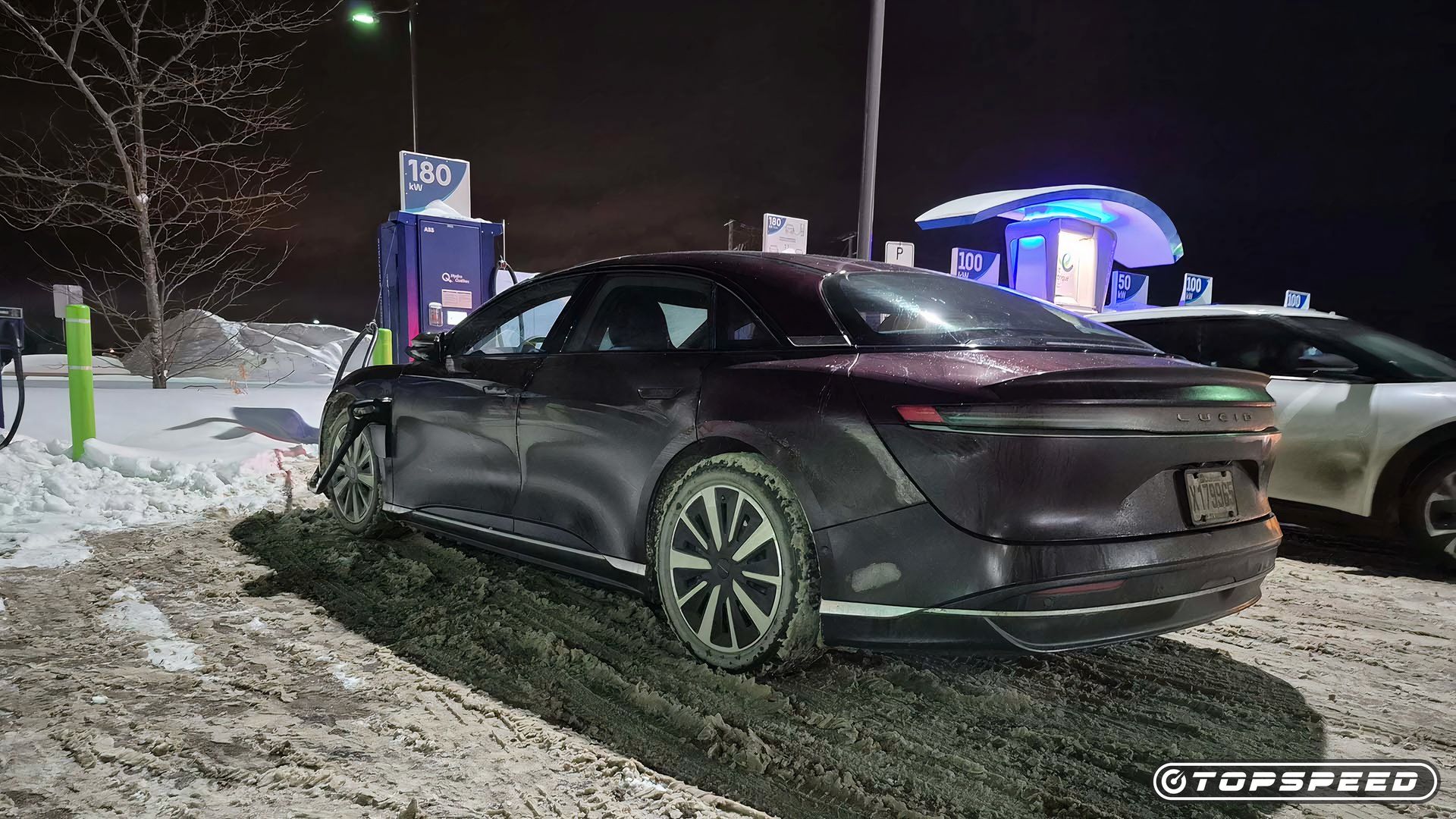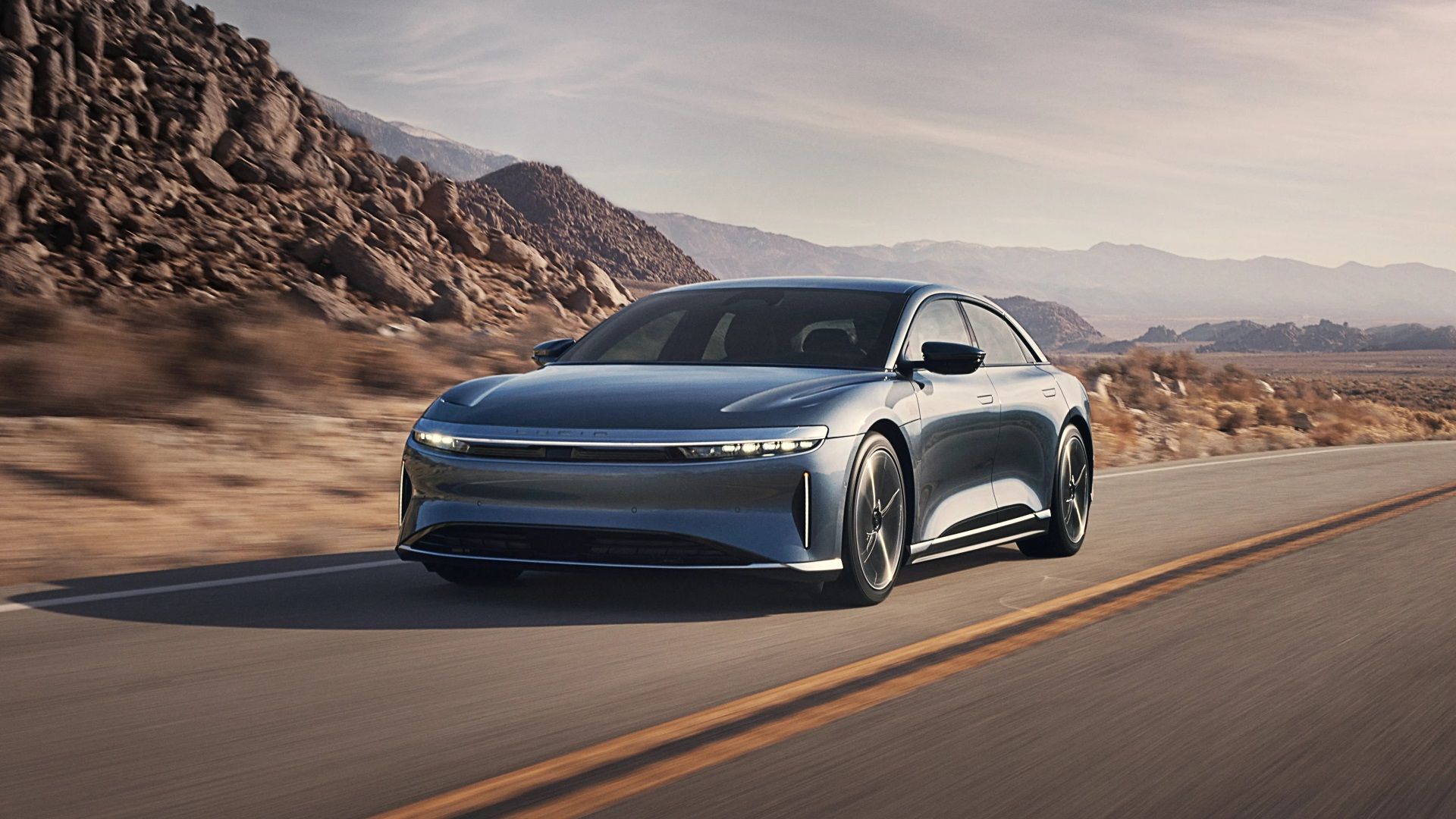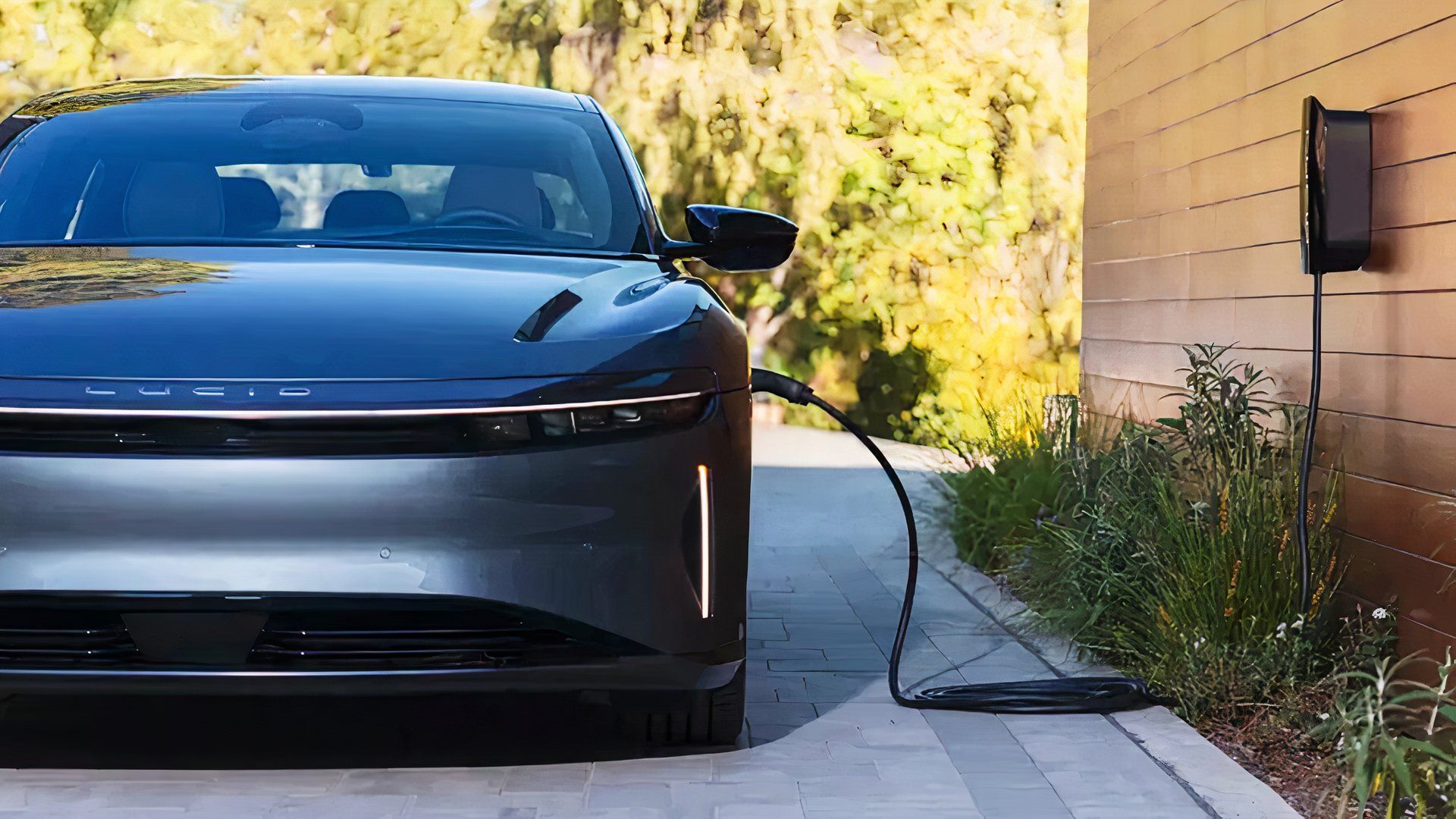One of the biggest reasons why electric car adoption has been so much slower than expected in the U.S. is because of an initial lack of public charging infrastructure. This has been quickly changing in recent times as governmental departments and manufacturers work together to expand the national network in anticipation of mass market EV adaption. As of 2025, the
American public charging infrastructure network
is very impressive, but it still doesn’t meet the requirements of most users. Furthermore, a lot of work still needs to be conducted by manufacturers to improve EV charging speeds.
Owning an EV
and using it as a daily driver is a viable option in today’s personal vehicle climate, but they still lack the same level of practicality as ICEs, which you can refuel in a matter of seconds.
There are some EVs that offer an impressive blend of battery capacity and fast charging speeds, making them very attractive options if you cover lengthy distances on a daily basis and may frequently require public charging services. There is one relatively young luxury full-size sedan option from an impressive American start-up that enters the market as the best option for you to consider if you need to meet these requirements. It’s admittedly a very expensive alternative, but when you look at what you get for your money, it’s really a competitive and appealing new vehicle purchase option. Thanks to an intelligently designed drivetrain and battery system, this EV currently benefits from the fastest charging speeds and longest EPA-estimated range figures, making it the most practical EV consideration for the current charging landscape.
In order to give you the most up-to-date and accurate information possible, the data used to compile this article was sourced from Lucid’s websites and other authoritative sources, including the EPA and Paren.
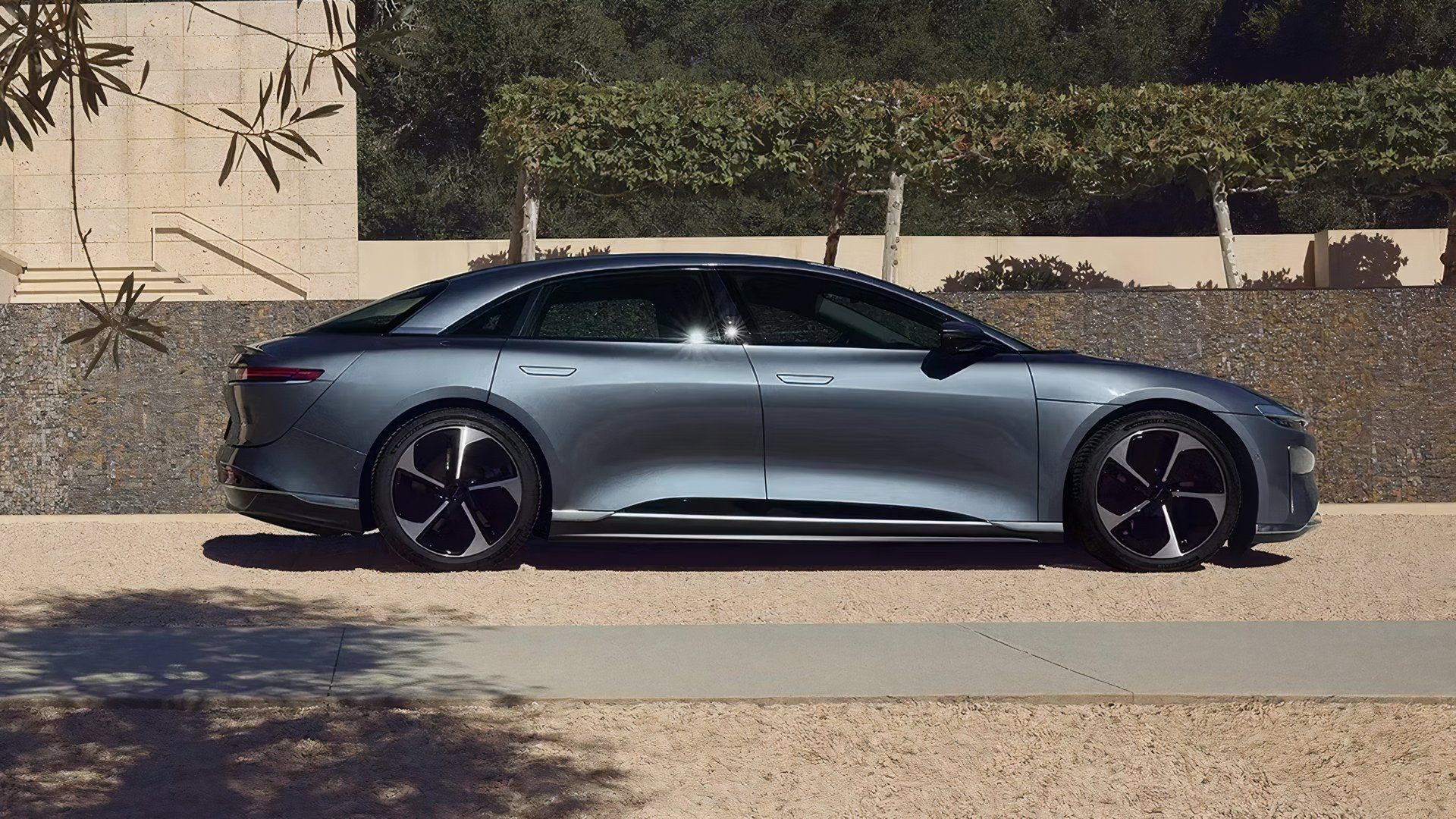
Related
The EV That Delivers Luxury And Efficiency For Less
This is the EV you need to be looking at if you want the best luxury and over 400 miles of range without breaking the bank.
The Lucid Air Perfectly Matches 2025’s Charging Landscape
The
2025 Lucid Air
is currently the best EV option for you to consider if you want to take full advantage of the U.S.’s current EV charging landscape. The Grand Touring model with the standard 19-inch wheels in particular is the trim that you’re going to want to consider, as it benefits from the fastest charging time and EPA-estimated energy consumption figures. This model features the Wunderbox 900-volt onboard charger, giving you access to 350 Watts of fast charging. As a result, you can expect the 112 kWh lithium-ion battery pack to recover 200 miles of range in just 12 minutes.
This battery pack also gets you access to the
Grand Touring’s 512-mile estimated range
claim, which is the highest figure for any electrified vehicle currently sold in the U.S. Despite its size and power output, the Lucid Air Grand Touring only consumes 26 kWh per 100 miles on the combined cycle, reflecting an impressive balance of performance and efficiency.
The EPA estimates that you’ll be spending $600 on electricity every year, which translates to $5,750 worth of fuel cost savings over five years. You’ll find yourself spending around 99 cents to drive 25 miles.
2025 Lucid Air EPA-Estimations
| Model | Pure (19-Inch Wheels) | Touring (19-Inch Wheels) | Grand Touring (19-Inch Wheels) | Sapphire |
| Battery Capacity | 88.0 kWh Net | 92.0 kWh Net | 112.0 kWh Net | 118.0 kWh Net |
| Fast Charging Time | 200 Miles In 17 Minutes | 200 Miles In 16 Minutes | 200 Miles In 12 Minutes | 200 Miles In 15 Minutes |
| Efficiency (City) | 149 MPGe | 133 MPGe | 129 MPGe | 108 MPGe |
| Efficiency (Highway) | 142 MPGe | 130 MPGe | 126 MPGe | 101 MPGe |
| Efficiency (Combined) | 146 MPGe | 132 MPGe | 128 MPGe | 105 MPGe |
| Consumption | 23 kWh/100 Miles Combined | 26 kWh/100 Miles Combined | 26 kWh/100 Miles Combined | 32 kWh/100 Miles Combined |
| Range | 420 Miles | 406 Miles | 512 Miles | 427 Miles |
| Five-Year Fuel Savings | $6,250 | $5,750 | $5,750 | $5,250 |
| Annual Energy Cost | $500 | $600 | $600 | $700 |
| Cost To Drive 25 Miles | $0.87 | $0.96 | $0.99 | $1.20 |
The Grand Touring is a costly new EV option, so there may be more value in
considering the base Pure model
, which also adapts to the American charging infrastructure fairly well. This features a slightly less powerful charging system, limited to 200 kW, and a smaller 88 kWh battery pack, which can still recover 200 miles of range in an impressive 17 minutes. This model will cover 420 miles on a single charge and return an impressive 23 kWh per 100 miles on the EPA’s combined cycle, making it the most efficient EV that money can buy today. This model saves you up to $6,250 in fuel costs over five years and costs $500 to keep recharged every year. You’ll only find yourself spending 87 cents to drive it 25 miles.
If you are more attracted to all-out performance, the flagship Sapphire derivative features a 118 kWh battery pack that takes a mere 15 minutes to recover 200 miles. It’s also able to achieve 427 miles on a single charge, but returns a slightly less preferable 32 kWh per 100 miles on the combined cycle. You can expect this to save you $5,250 in fuel costs over five years and cost $700 to recharge throughout the year. Despite its impressive performance, it only costs $1.20 to drive 25 miles.
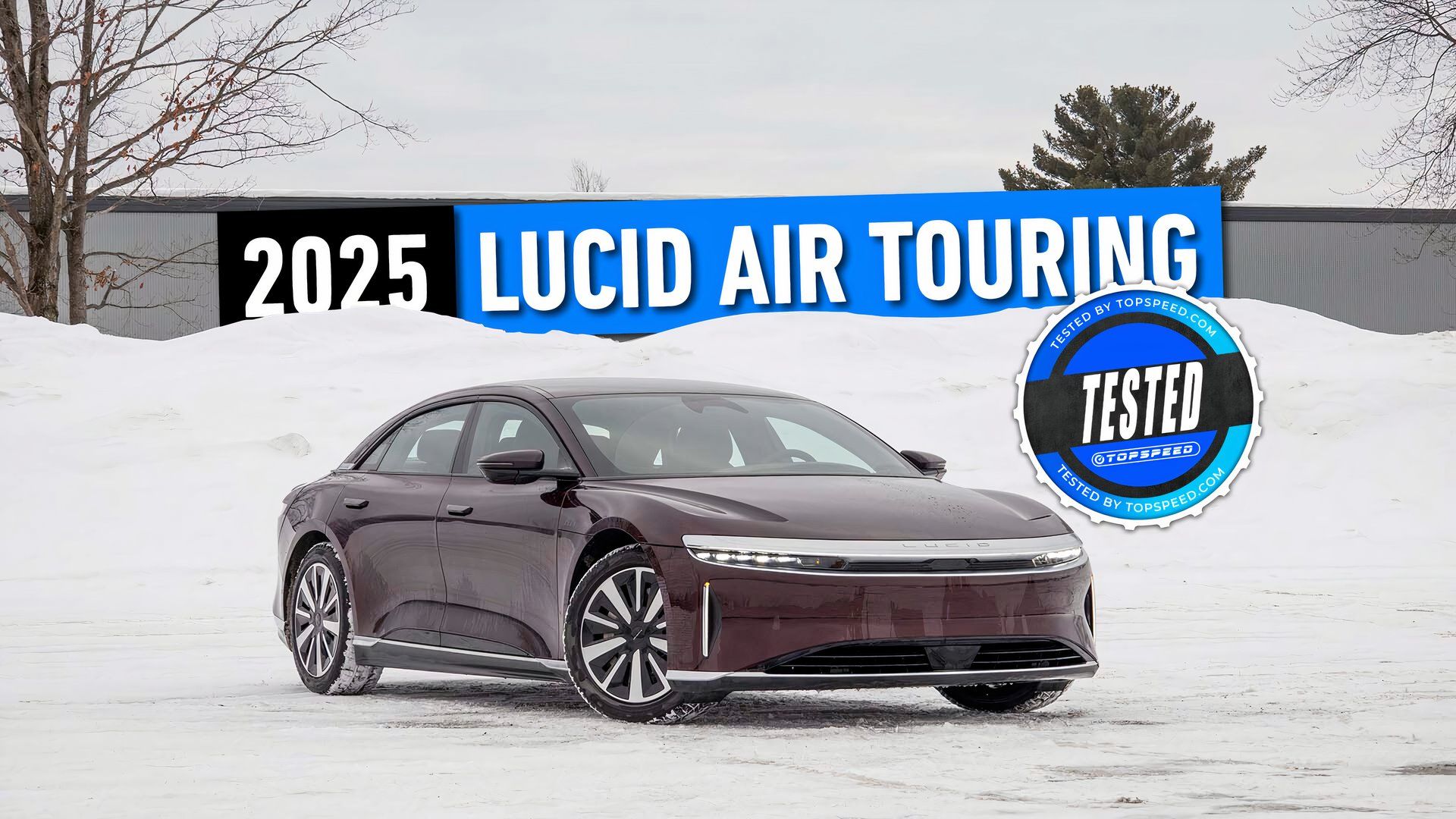
Related
Review: The Queen Of EVs Is Still Very Much The Lucid Air
Take away all of its industry-leading electric car capabilities, and the Lucid Air remains a delightful luxury sedan.
The Lucid Air’s Impressive Power Outputs
When it comes to performance, there are very few vehicle options that can best the Lucid Air. The base Pure features a single rear-wheel-drive permanent-magnet-synchronous motor that generates 430 horsepower and 406 pound-feet of torque output. As per the brand’s claims, you can expect it to sprint from 0-60 MPH in just 4.5 seconds. Lucid limits the top speed to a relatively low 124 MPH figure. This model will set you back by $69,990 before optional extras. Upgrading to the Touring for $78,900 gets you access to a dual-motor all-wheel-drive configuration, producing a combined 620 horsepower and 885 pound-feet output, which gets you from 0-60 MPH in 3.4 seconds before hitting a 140 MPH top speed limit.
2025 Lucid Air Performance And Specifications
| Pure | Touring | Grand Touring | Sapphire | |
| Price | $69,990 | $78,900 | $110,900 | $249,000 |
| Powertrain | Single permanent-magnet motor | Dual permanent-magnet motors | Dual permanent-magnet motors | Triple permanent-magnet motors |
| Horsepower | 430 HP | 620 HP | 819 HP | 1,234 HP |
| Torque | 406 LB-FT | 885 LB-FT | 885 LB-FT | 1,430 LB-FT |
| Transmission | Single-Speed Automatic | Single-Speed Automatic | Single-Speed Automatic | Single-Speed Automatic |
| Driveline | RWD | AWD | AWD | AWD |
| 0-60 MPH | 4.5 Seconds | 3.4 Seconds | 3.0 Seconds | 1.89 Seconds |
| Top Speed | 124 MPH | 140 MPH | 168 MPH | 205 MPH |
The $110,900 Grand Touring model introduces supercar-rivaling outputs, with a combined 819 horsepower figure. This model sprints from 0-60 MPH in a mere 3.0 seconds, with a 168 MPH top speed limit. The
Sapphire sits at the very top of the Lucid Air hierarchy
, with a triple electric motor configuration producing a combined 1,234 horsepower and 1,430 pound-feet of torque output. With a one-foot rollout subtracted, you can expect to cover 0-60 MPH in 1.89 seconds and hit a top speed of 205 MPH.
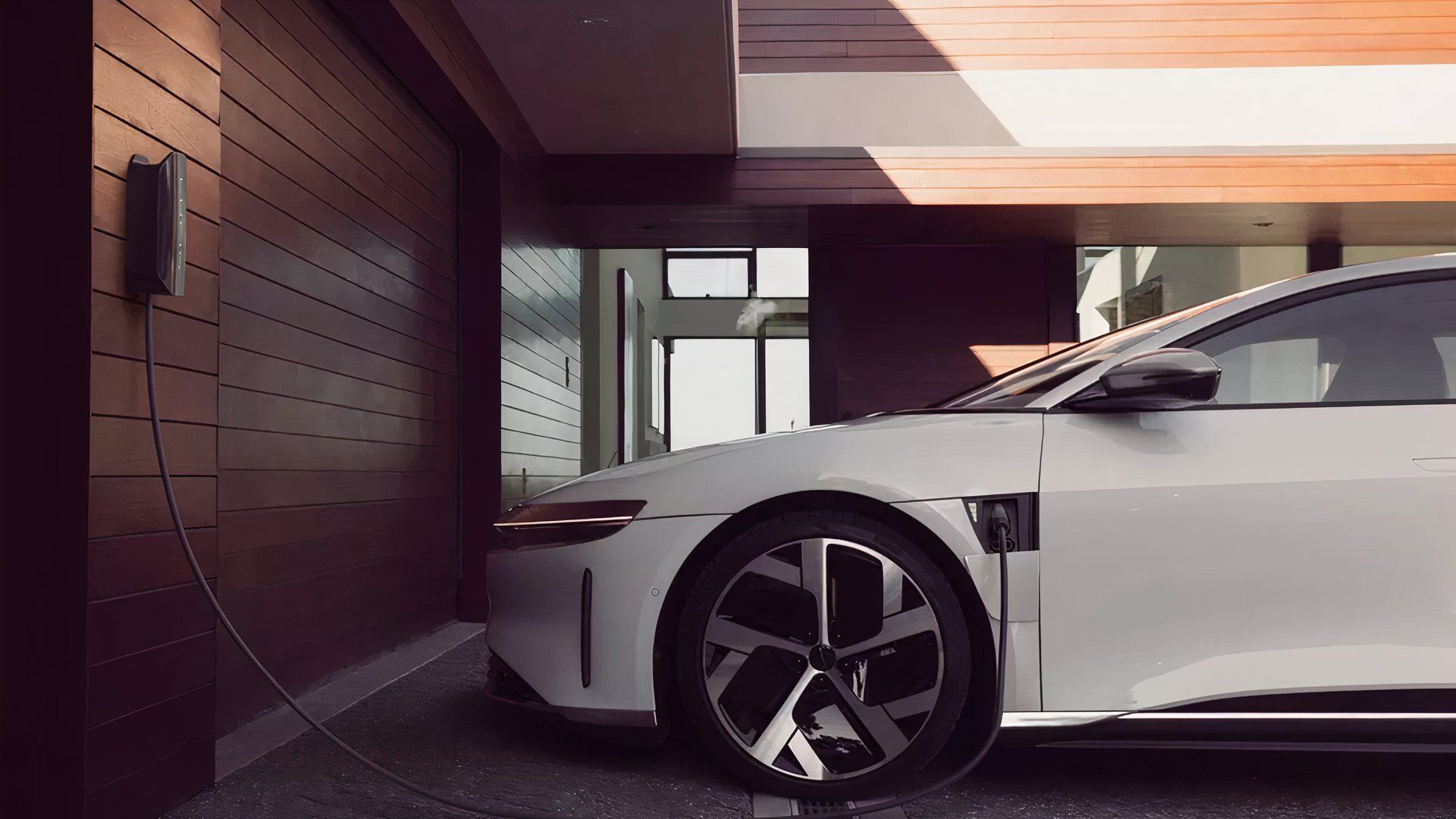
Related
The EV With The Lowest Charging Costs In 2025
This American luxury EV will cost you the least to charge on a daily basis.
The State Of America’s Charging Infrastructure In 2025
Paren’s Q1 2025 State of the Industry Report on American EV fast charging shows that reliability is improving, stations are growing, and some markets are hitting 25 percent in average utilization. Paren’s Reliability Index rose from 81.2 percent in Q4 2024 to 82.6 percent, thanks to upgraded hardware and new players offering more dependable systems and better user experiences.
Fast charging infrastructure
continues to expand, with the US adding 3,667 new charging ports and 794 new stations in Q1, bringing totals to 55,580 ports and 10,839 stations. Growth slowed compared to Q4 due to seasonal construction delays, not waning momentum. Utilization dipped slightly to 16.2 percent from 16.6 percent as holiday travel demand faded, but cities like Las Vegas, Miami, and LA see peak-hour rates pushing 40 percent due to ridesharing usage and apartment dwellers relying on public charging.
Non-Tesla networks
now average 3.9 ports per station, up from 2.7 a year ago, showing progress toward Tesla’s average of 13.0 and NEVI’s minimum of four. The shift to the NACS connector is underway but slow, with just 104 NACS ports added by non-Tesla networks in Q1, so new non-Tesla EV drivers will still need adapters. Fixed pricing remains the dominant model at 80 percent, while Time of Use pricing sees most traction in California. A major concern is the NEVI program’s pause, which threatens growth in rural and low-income areas, potentially deepening a charger divide as networks chase high-use urban zones and neglect areas with utilization under five percent.

